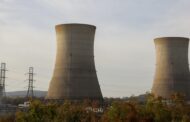The clean energy space is focused on wind and solar. Both are somewhat inefficient but have the advantage of “free” fuel and are deployable at scale today. However, long-term, we need better, more efficient, and more reliable sources of clean energy.
The investment community is pouring money into hydrogen. Still, many – including environmentalists – doubt that hydrogen can or should play a significant role. That in large part is due to the technical challenges of producing zero-emission or green hydrogen.
The recent discovery of a large deposit of white hydrogen might change the hydrogen production dynamics. White hydrogen is naturally occurring, and as such, its “production” is carbon-free.
Recently, Jacques Pironon and Phillipe De Donato from France’s National Centre of Scientific Research, were assessing methane levels in the subsoils of the Lorraine mining basin. In the process they were using a “world first” special probe capable of analyzing gases dissolved in the water of rock formations deep underground.
At relatively shallow depths small concentrations of hydrogen were detected. That wasn’t a surprise. The surprise came at a depth of about a mile where the concentration level ticked up to as high as 20%.
Eureka!
Could this be the first large deposit of white hydrogen ever discovered?
Maybe.
The scientists ran calculations but could only estimate its size between 6 million and 250 million metric tons of hydrogen.
The irony of hydrogen is that it is the most abundant element in the universe. However, it usually only exists combined with other molecules.
And this wasn’t the first time people stumbled on a hydrogen deposit. In 1987 – in a village in Mali – a well-driller smoking a cigarette was burned after a water well exploded. The well was capped and abandoned until 2011. When an oil and gas company uncapped it, they found that the escaping gas was 98% hydrogen. Happy ending: the hydrogen was and is still being used to power the village.
In 2018 a study on the well was published but the scientific community was skeptical. They didn’t believe it was possible. But during the pandemic, Geoffrey Ellis, a geochemist with the US Geological Survey had time on his hands and started looking a little deeper. His conclusion: we haven’t been looking in the right places for hydrogen deposits.
That changed the narrative from it doesn’t exist, to where do we find it?
Ellis thinks that there could be tens of billions of tons of white hydrogen globally. That amount would dwarf the 2050 production goal of 500 million tons. He admits most of it would be in small quantities or too deep to economically extract. But Ellis believes that if just 1% of it can be located and economically extracted it could provide 500 million tons for 200 years.
Now, we might find out.










